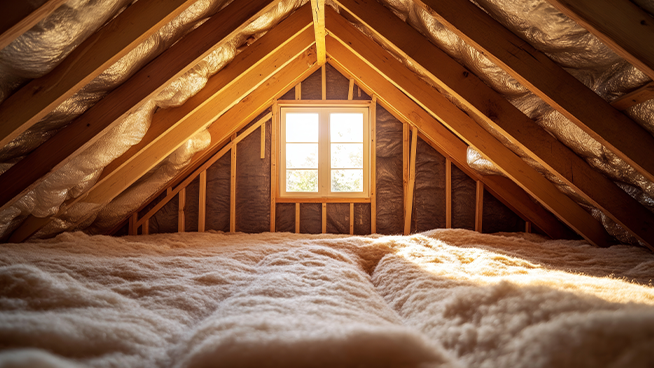
From The Detroit News | By Ken Calverley and Chuck Breidenstein
DETROIT, January 9, 2025 ~
It’s all about heat.
That precious commodity without which we would all perish.
Understanding how heat moves can help you to keep your home, and your family, comfortable and safe.
First know this: Heat goes to cold. Wherever we have items of varying temperature, the warmer of the two will give up its heat to the cooler substance.
When we vacate a home for the week in January and shut off the heat, everything in the home, from seat cushions to silverware in the drawers, gives up its stored heat energy and becomes cold.
Air that is warmed becomes lighter and less dense and will rise. As that air rises, it creates a movement of cooler air below to occupy the space vacated.
If you stand facing east at the shoreline of a Great Lake early morning, it is often calm as the sun rises.
The air at the water’s edge begins to warm and rise. As it rises, it draws cooler air from the lake surface to replace it and a breeze develops, which may also create waves. All because of heat movement.
PODCAST:
Jan. 16, 2025 ~ Chuck “The Inside Guy” Breidenstein and Ken “The Outside Guy” Calverly offer the knowledge and resources you need to make the home of your dreams a reality.
(CONTINUED)
For our purposes, heat is typically moved through one of three methods: conduction, convection and radiation.
Have you ever wondered how the heat from our sun actually reaches Earth without first dissipating into the infinite cold of outer space?
Radiant waves that contain heat energy will move through space, both empty space like that between Earth and sun and fluid space like that between a hot stove burner and your hand.
When radiant heat waves strike an object, the heat energy is transferred to the object.
This happens as the sun’s rays strike atmosphere, dirt, pavement, roofs, windows, etc.
When we are outside on a sunny day, we feel the heat waves strike our skin and feel the absorbed energy.
Heat also moves through convection, where a heated particle becomes lighter and rises and slowly gives up its heat energy to other particles and, becoming denser and heavier, falls.
This is called a convective current and occurs in our homes all the time. In one example, we introduce heated air forced through air supply ducts at the lowest and coldest part of the exterior wall, usually under a window or near a door.
This heated air rises across the living space giving up its heat to cooler air and surfaces. The Guys like to imagine that each temperature gradient is a different color, creating a virtual rainbow in every room of the house.
Our objective is to have all temperatures the same.
When air is allowed to be still, temperature may stratify or develop layers. In the extreme, all the warm air in the home would rise to the ceiling and all the cooler air would be at the floor where we are. Because of this, the Guys suggest keeping the air slowly moving in the home to create uniform temperatures and assure comfort.
A third method of heat movement is conduction. When your bare feet, warmed from the comfort of your bed, tread across that ceramic bathroom floor at midnight, you are subject to conductive heat loss; literally losing heat from your toes into the floor below.
Conductive heat movement occurs whenever one object touches another of varying temperature.
Touch a cold windowpane and you have conductive heat movement. Stick your tongue on that cold steel pipe outside.
Every material also has a measure of what we call thermal conductivity. How well does heat move through the material, or how well does the material resist the movement of heat through it?
Insulating materials in the home have a high resistance, R Value, to heat transfer, whereas materials that we cook with, like copper, steel, and aluminum, for instance, will have a higher thermal conductivity.
So, what do we do as homeowners to protect ourselves and our property?
Good thermal insulation and air sealing of the home is critical and will always pay dividends when professionally done.
Properly specified and installed windows and doors are a must.
Good ventilation in and around the home is also a key component. Efficient air movement through clean, sealed, ducts, low velocity fans, good attic ventilation and air movement around the building itself will make a difference.
And, as always, any work done should be done by a true professional you can trust. Pros like those you can find every day at InsideOutsideGuys.com.
**
For more advice, listen to the Inside Outside Guys every Saturday and Sunday on AM760-WJR from 10 a.m.-noon or contact us at InsideOutsideGuys.com.
MORE FROM THE INSIDE OUTSIDE GUYS:





